Breast Reduction in Phuket
Search and Compare the Best Clinics and Doctors at the Lowest Prices for Breast Reduction in Phuket
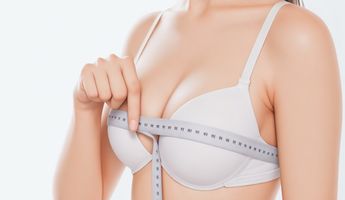
Find the best clinics for Breast Reduction in Phuket
With Medijump you can browse 2 facilities offering Breast Reduction procedures in Phuket. The cheapest price available is $1,499 in Nakhon Si Thammarat
Breast Reduction in Thailand
Price: $ 1,499
Breast Reduction in Nakhon Si Thammarat
Price: $ 1,499
Breast Reduction in Bangkok
Price: $ 2,779
Czech Republic offers the best prices Worldwide
Price: $ 89
From 16 verified reviews
Soren Lim, 22 August 2022
I had a breast augmentation at Jungceylon Plastic Surgery Phuket and it was an amazing experience. The doctor was so knowledgeable and made me feel so comfortable. The results were even better than I expected; my breasts look so natural and perky. I'm very happy with the results and would highly recommend Jungceylon Plastic Surgery Phuket to anyone considering a breast augmentation.
From 15 verified reviews
Limbani, 28 August 2024
Excellent care and fantastic results! The staff at PPSI made me feel comfortable and supported throughout the entire process.
Compare Before & After Photos of _procedure_photos.phpBreast Reduction

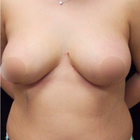
Front view

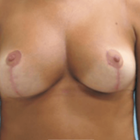
Front view

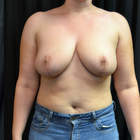
Front view
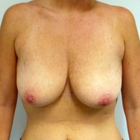

Front view


Front view


Front view
WHY US?
At Medijump, we're making medical easy. You can search, compare, discuss, and book your medical all in one place. We open the door to the best medical providers worldwide, saving you time and energy along the way, and it's all for FREE, no hidden fees, and no price markups guaranteed. So what are you waiting for?

Free

Best Price

Widest Selection

Risk-Free
What you need to know about Breast Reduction in Phuket
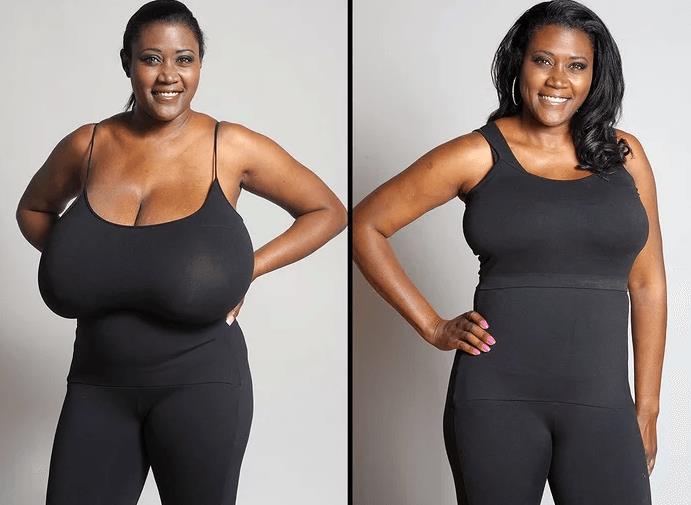
Female Breast reduction (reduction mammoplasty), also known as Reduction Mammoplasty, is a surgical operation to reduce the weight and volume of the breasts. During the procedure, fat, glandular tissue and skin are removed from the breasts, which are then reshaped, and the nipples repositioned. The nipple-areola complex (NAC) is preserved to ensure that lactational ability is not affected. The mammoplasty is performed for three reasons, aesthetic, physical and psychological.
Breast size is determined by genes, hormones, body frame, and weight. For most women, breast size is proportionate to the body, but for some, the breasts are particularly large. Large breasts can cause physical symptoms such as discomfort, backache, neck pain, and skin irritations. Oversized breasts can also cause psychological distress. Common complaints from women with large breasts include not being able to wear fashionable clothes and finding it difficult to take part in active sports. In these cases, breast reduction surgery can be an option.
What does a Breast Reduction Procedure Involve?
The procedure begins with making you lay in the supine position. Anesthesia is given to avoid pain during surgery. The area is sterilized and an incision is given around the areola and down your breasts. The flap of skin containing areola and nipple is displaced and excessive fat, breast tissue, and skin are removed to lessen the size of your mammary gland. In the next step, breasts are reshaped, areola and nipples are again placed over the reduced breasts and stitches are given.
In some cases, when a large amount of tissue and fat is removed, skin flap with areola and nipples is detached and repositioned at a higher level according to the new size. Drainage tubes are inserted into the breasts to drain away blood and fluid. Bandages are applied over the stitched incisions. You are asked to wear a surgical bra. It is tried to make both breasts look alike; however, small variations in the size of breasts and areola can be there.
What about Breast Augmentation?
Breast augmentation might also be performed on women who suffer from a condition called macromastia. It can be due to various reasons such as hypertrophy of adipose tissue in the breast, after menopause, postpartum, genetics, etc. In this condition, your breasts are sagging, and their size is bigger in proportion to your body, causing a number of problems. A woman affected by macromastia suffers from pain in the head, neck, shoulders, and back. Blood circulation and respiration are also disturbed. Men who experience gynecomastia can also opt for breast reduction surgery.
Another case where breast reduction can be an option is when breasts grow particularly large because of the use of hormone replacement therapy (HRT).
What is the cost of Breast Reduction in Phuket?
It's crucial to bear in mind that Breast Reduction is a substantial procedure. Consequently, contemplating the expense of this process within Phuket is critical. While the total cost might fluctuate based on individual circumstances and the intricacy of the operation, it typically includes the cost of anesthesia, hospital expenses, surgical equipment, and the surgeon's charge. Having a comprehensive understanding of the total price is critical to make an educated decision and align your financial planning accordingly.
Numerous factors could influence the expense of a Breast Reduction in Phuket. This includes the skill level of the surgeon, the complexity of the procedure, the kind of anesthesia applied, and postoperative care services. Thorough research and careful financial planning should enable you to handle the costs associated with the process. Also, if needed, you could consider alternatives for financial aid or insurance cover.
How Long Should I Stay in Phuket for a Breast Reduction Procedure?
Surgery can last between 2 to 5 hours and sometimes even longer depending upon the size of your breasts and amount of fat and tissue that is to be removed - an overnight stay as an inpatient is required. After your condition is monitored, you are discharged from the hospital. You have to stay for at least 14 days in Phuket for follow up procedures. Regular check-ups are advised in the first few days after surgery. Oral pain killers are given to deal with pain and swelling. Stitches are removed in 2 weeks after which you are allowed to go home. In case you notice any redness, secretion, abnormal pain or inflammation, consult your doctor.
What's the Recovery Time for Breast Reduction Procedures in Phuket?
It takes several months for recovery from a breast reduction surgery. You cannot go to work for 1 to 2 weeks after the surgery. There will be pain and swelling in the initial days for which you are given some medicines. Avoid intensive physical activity for at least 1 month. You are asked not to wear underwire bras for a few months. You are allowed to wear a normal bra after 4 weeks. It takes 6 to 8 weeks for the swelling and tenderness to go away. Even after complete recovery, scars do not disappear. However, they are faded and become less visible. Changes continue to take place for a year after going through this surgery.
What sort of Aftercare is Required for Breast Reduction Procedures in Phuket?
You should consider the following points to take care of yourself after surgery:
- Do come for regular check-ups.
- Take your medicines regularly, as and when prescribed by your physician.
- Make sure that someone lives with you to look after you.
- Follow a healthy diet plan for a better recovery.
- Do not wear fancy, underwire bras in the early days. Wear surgical bra only.
- Wear loose clothes, tees, and shirts.
- Avoid excessive, unnecessary movement of your breasts.
- Do not take a bath in the first few days, a wet bandage can be the cause of infection.
- Do not ignore any kind of soreness, redness or abnormal secretions from your breasts. Visit your doctor immediately.
- Drink plenty of water. It is very effective for a quick recovery.
- Use icepacks to help you with swelling.
- Do not try to lift heavy objects because your movement is restricted due to stitches. It can open up your stitches before time.
- Do some stretching exercises when told by your physician.
What's the Success Rate of Breast Reduction Procedures in Phuket?
Breast reduction mammoplasty is found to be successful in most of the cases. According to a survey, 80% of women are satisfied with the results of the surgery. This effectively reduces neck pain, back pain, headache, and shoulder pain, with your breasts no longer sagging and causing these problems. Respiratory and circulatory problems are also resolved. In case this surgery is not successful, it leaves prominent scars which can be subjected to hypertrophy. There might be less than the required amount of tissue and fat removal. Sometimes, more breast tissue is removed leaving your chest flat. A secondary breast reduction surgery is performed to cope with this.
For an in-depth and personal review of the pros and cons of Breast Reduction, including before and after shots, watch this video blog.
Are there Alternatives to Breast Reduction Procedures in Phuket?
Following are some alternatives to reduce your breast size without going through a surgery:
- Weight Loss: losing weight can also be effective in the case of reducing breast size. Some exercises are there to help you decrease your size. Exercise removes excess adipose tissue making your breasts smaller.
- Liposuction: it is a less invasive method in which a small incision is given to insert a cannula and fat is sucked from it reducing breast size. There are least scarring and recovery is faster.
- Fitting bra: it is not a permanent method to reduce your breast size but a specialized fitting bra can be helpful in making your breasts look smaller. It is not a standard bra.
What Should You Expect Before and After the Procedure
Knowing what to expect before and during a Breast Reduction helps you prepare physically, intellectually, and emotionally for the experience. A comprehensive health examination is scheduled before the procedure. Along with preparing for the procedure by following the pre-surgery instructions supplied by your healthcare institution, this is also your chance to discuss your hopes and concerns with the surgeon. Your food routine, medication regimen, and lifestyle practises might need to change as a result of this preparation.
After the surgery, it's common to feel some soreness, inflammation, and sometimes even bruising. All of these symptoms can be treated with the right medication. It's important to unwind, refrain from strenuous activity for a few weeks, wear a bra with a specific purpose, and follow a specific wound care regimen.
What are Potential Risks of Breast Reduction?
The Breast Reduction, similar to any other surgical procedure, poses possible risks and complications such as infection, bleeding, altered sensation in the nipple or breast due to anesthesia, and difficulties in breastfeeding post-operation. It is imperative to have a detailed discussion about these potential issues with your healthcare professional at the consultation phase.
It's important to know that the probability of these risks occurring is minimal and can be reduced further by opting for a well-respected clinic and surgeon, following the pre-surgical instructions, and adhering to the aftercare routine provided.
Whilst the information presented here has been accurately sourced and verified by a medical professional for its accuracy, it is still advised to consult with your doctor before pursuing a medical treatment at one of the listed medical providers
No Time?
Tell us what you're looking for and we'll reachout to the top clinics all at once
Enquire Now

Popular Procedures in Phuket
Prices Start From $85

Prices Start From $120

Prices Start From $692

Prices Start From $236

Recommended Medical Centers in Phuket for Breast Reduction

- Interpreter services
- Translation service
- Religious facilities
- Medical records transfer
- Medical travel insurance
- Health insurance coordination
- TV in the room
- Safe in the room
- Phone in the room
- Private rooms for patients available

- Interpreter services
- Translation service
- Religious facilities
- Medical records transfer
- Medical travel insurance
- Health insurance coordination
- TV in the room
- Safe in the room
- Phone in the room
- Private rooms for patients available

- Interpreter services
- Translation service
- Religious facilities
- Medical records transfer
- Medical travel insurance
- Health insurance coordination
- TV in the room
- Safe in the room
- Phone in the room
- Private rooms for patients available

- Interpreter services
- Translation service
- Religious facilities
- Medical records transfer
- Medical travel insurance
- Health insurance coordination
- TV in the room
- Safe in the room
- Phone in the room
- Private rooms for patients available

- Interpreter services
- Translation service
- Religious facilities
- Medical records transfer
- Medical travel insurance
- Health insurance coordination
- TV in the room
- Safe in the room
- Phone in the room
- Private rooms for patients available

- Interpreter services
- Translation service
- Religious facilities
- Medical records transfer
- Medical travel insurance
- Health insurance coordination
- TV in the room
- Safe in the room
- Phone in the room
- Private rooms for patients available

- Interpreter services
- Translation service
- Religious facilities
- Medical records transfer
- Medical travel insurance
- Health insurance coordination
- TV in the room
- Safe in the room
- Phone in the room
- Private rooms for patients available

- Interpreter services
- Translation service
- Religious facilities
- Medical records transfer
- Medical travel insurance
- Health insurance coordination
- TV in the room
- Safe in the room
- Phone in the room
- Private rooms for patients available

- Interpreter services
- Translation service
- Religious facilities
- Medical records transfer
- Medical travel insurance
- Health insurance coordination
- TV in the room
- Safe in the room
- Phone in the room
- Private rooms for patients available

- Interpreter services
- Translation service
- Religious facilities
- Medical records transfer
- Medical travel insurance
- Health insurance coordination
- TV in the room
- Safe in the room
- Phone in the room
- Private rooms for patients available
Breast Reduction in and around Phuket
About Phuket
Phuket, Thailand’s largest island nestles in the Andaman Sea. The island is an incredible blend of beautiful beaches, lush green hills, mangroves and rainforests. The tin mining industry has been the major contributor to its economy since the 16th century. However, In recent years, the tourism industry and rubber production have developed as major industries which contribute to the economy.
But beyond its breathtaking beaches and sceneries, Phuket also boasts an exceptional infrastructure, including advanced property development and luxurious hotels and shopping malls, catering to the needs of every visitor. It offers a plethora of recreational and entertainment options to everyone willing to enjoy its beauty and ambience.
Phuket has quickly become a preferred destination for medical tourists worldwide due to the unparalleled quality and affordability of its healthcare services. Whether it's critical life-saving procedures or elective cosmetic surgeries, the medical care provided in this city is commendable. A significant factor in Phuket's appeal is the comparative cost efficiency - the expense of dental and cosmetic treatments, in conjunction with the costs of travel and accommodation, is significantly lower than similar expenditures in numerous other countries.
Furthermore, the exceptional aftercare services in Phuket are a key component of the fully-rounded healthcare experience. Patients receive top-notch care and attention during their recovery process, enabling quicker recuperation and return to health. In this wellness-centered environment, patients are both physically replenished and mentally rejuvenated in the tranquil, picturesque settings of Phuket.
The medical tourism sector in Phuket is also buoyed by the introduction of attractive and competitive all-inclusive packages offered by numerous medical tourism agencies. These packages ingeniously integrate health and holiday elements, affording medical tourists the chance to recover and relax simultaneously. Tourists are thus afforded the opportunity to enjoy Phuket’s awe-inspiring landscapes and leisure offerings even as they benefit from top-tier medical treatments.
Maintaining its high standards in healthcare, Phuket houses two of the region's top-ranking private hospitals - the Phuket International Hospital and the Bangkok Hospital Phuket. These institutions are renowned for their state-of-the-art medical facilities and services, and their proficient English-speaking doctors. Highly recommended for a range of procedures including Cosmetic Surgery, Lasik Laser Surgery, and dental treatments, they guarantee an excellent standard of care and professionalism.
Popular Areas in Phuket
For a truly immersive Thai experience, one can opt for a walking tour through the heart of Phuket town. On your journey, you will be charmed by the robust impression of the Sino-Portuguese houses, shophouses, and opulent mansions. This architectural splendour is a vivid testament to the Chinese and Portuguese influence that has shaped the island's identity since the 16th century.
In the next phase of the tour, you will traverse the meandering streets, where each corner beckons with a tale of its own. As you further explore the town, you'll see local shops selling traditional Thai goods, bustling markets brimming with fresh local produce, and small family-run restaurants serving authentic, scrumptious Thai cuisine. Each stop underscores the rich, cultural tapestry of Phuket and its unique blend of Thai, Chinese, and Portuguese cultures - a melting pot that has been simmering since the 16th century. It's more than just a tour; it's a delightful plunge into the vibrant history and palpable heritage of Phuket.
For a complete holiday feel, you can visit the numerous small islands around Phuket and visit Phang Nga Bay as it is a mesmerizing site with limestone cliffs jutting out of the turquoise blue waters. You can also try sea canoeing, as many grottoes are accessible only by canoes. Phang Nga Bay is home to the now-famous James Bond Island with its iconic large leaning rock. Patong Beach is the most popular beach resort on the island and is always full of people as the town is bustling with activity and hosts many bars, discos and restaurants serving International cuisine.
Imbued with a profound Buddhist legacy, the island of Phuket is dotted with an abundance of quaint Buddhist temples, each boasting its distinct charm. Standing proudly amongst them all is the illustrious "Big Buddha." This awe-inspiring marble statue graces the peak of a hill and captures the onlooker's attention with its towering stature of 150 feet in height and 85 feet in width, poignantly portraying Gautama Buddha in a serene sitting position.
As you draw closer, the Big Buddha’s elevated location offers panoramic views of Phuket that are genuinely unrivalled – a mélange of the blue-green sea, unbroken stretches of sandy beaches, and the verdant green of the island’s lush hilltops. It’s not just the scale of the statue that captivates visitors, but the soul-soothing tranquillity that pervades the area. Every detail, from the rhythmic chants that resonate through the air to the soft whispers of the winds, adds a spiritual depth to the site. Whether you're a follower of Buddhism or simply a traveller curious to explore, the towering Big Buddha invites you to contemplate the interconnectedness of life and nature, honouring the philosophical principles of Buddhism.
You will not be short of things to do as Phuket has many more islands, museums, the Khao Phra National Park and the Tiger Kingdom to visit.
Weather and Climate in Phuket
Phuket experiences a predominantly tropical climate wherein it's usually hot and humid for most parts of the year. The temperature consistently hovers at a high average of approximately 86 degrees Fahrenheit, making it an ideal destination for sun-seekers.
However, there is a welcome respite during the dry season, which spans from December to March. During this period, temperatures and humidity levels take a slight dip, becoming more agreeable and comfortable, making it the most popular time for tourists. Occasional brief showers may occur, but they do little to interrupt the enjoyment of the tropical paradise. Meanwhile, the southwest monsoon introduces the rainy season from May through to October. At this time, the island is subject to an average rainfall of around 87 inches, with the heaviest deluge typically occurring in May and the September-October timeframe.
Despite the precipitation, this period also offers its unique charm to visitors. The rains bring about a different kind of beauty to the island, with lush greenery awash with life and spectacular waterfalls seen in their full glory. Indeed, the rainy season can be an ideal time for those seeking fewer crowds, more solitude, and the chance to experience a more lyrical and poetic side of Phuket's tropical charm.
Getting Around in Phuket
Phuket International Airport is located north of the island and there are many frequent flights to and from Bangkok and other regional airports like Singapore and Kuala Lumpur. Seasonal flights operate from major cities in Europe and Australia, during peak tourist season.
Phuket International Airport has services from major International airlines such as Singapore Airlines, Cathay Pacific, Emirates, Qantas, Etihad, Air China, and Edelweiss Air.
For domestic travel, Nok Air, Thai Air Asia, Orient Thai, and Thai Lion Air operate flights from the domestic terminal of the airport.
Once you land in Phuket, there are many transport options available to you and you can take the Municipal air-con airport bus to Phuket Town bus terminal 1 for 100 Bahts. There’s also the airport shuttle to Patong Beach for 120 Bahts. Phuket smart bus is another service that operates to various islands at a fixed rate of 170 Bahts. The other option is the Minibus services, which operate every time a flight arrives. They charge between 100-200 Bahts.
You can also hire metered taxis from outside the airport. The average fare starts from 400 Bahts with an extra surcharge of 100 Bahts. You can also reach Phuket from Bangkok by private car. The Sarasin Bridge connects Phuket Island to the mainland.
To move around the island, you will need some mode of transport. Public and private bus services are available from the two bus terminals in Phuket. Long distance buses operate from the new terminal but these only connect Phuket Town to the beach towns.
In Phuket, reliable means of navigation around the beautiful island consist of tuk-tuks and taxis. Of these, the minivan-like tuk-tuks or Songtaews, distinguishable by their distinct red colour, are immensely popular. However, as these vehicles do not have meters, agreeing on the fare before beginning the journey is advisable.
On the other hand, metered taxis often turn out to be a less expensive choice compared to tuk-tuks. Despite this, during peak traffic hours, drivers often switch to flat rates. For reliable and reasonable fares, opt for taxi services associated with your hotel. Other alternatives to exploring the island include rental bikes, motorbike taxis, and traditional longtail boats, each offering a unique perspective of the stunning landscape.
Tourist Visas in Phuket
International tourists travelling to Phuket and other parts of Thailand must have a passport which is valid for at least six months over and above their period of stay.
On the other hand, Effective September 25, 2023, Thailand has granted a temporary tourist visa exemption to passport holders of the People's Republic of China and the Republic of Kazakhstan. This visa exemption is valid until February 29, 2024. Also, Thailand has announced that it will be launching a new visa program for long-term visitors starting from October 1, 2023. The new visa program will allow visitors to stay in Thailand for up to 10 years.
Thailand provides tourist visa exemption to the nationals of 48 countries, which include Australia, the USA, Japan, and New Zealand. Under the exemption policy, they can stay in the country for not more than 30 days during each visit. However, passport holders of 28 countries which include India and Russia need to get a visa on arrival. You can get a tourist visa on arrival at the immigration checkpoints for a period not exceeding 15 days.
If you are required to apply for a Thailand visa, you can do so at a Thai embassy or consulate in your home country. You can also apply for a visa online through the Thai eVisa website.
When applying for a Thailand visa, you will need to provide the following documents:
- A valid passport
- A visa application form
- A passport photo
- Proof of onward travel
- Proof of financial support
Additional Information
- Thai is the official language of Phuket and is widely spoken on the island. However, you can manage with English in the main parts of the city and the tourist areas.
- Thai Baht is the currency of exchange in Phuket. As of late 2023, one US dollar is worth about 36.94 baht. You can, of course, use debit and credit cards anywhere in Phuket.
- Many of the major banks have their branches in Phuket Town and Patong. You can find ATMs in all shopping and tourist areas and in Seven-Eleven stores. Almost all currency exchange booths also offer an ATM service.
- Buddhism is the major religion in Phuket. However, you can find many Muslims too, who constitute about 20 percent of its population.
- Thai people are very friendly and forgiving and understand that visitors are not very aware of their customs and culture.
- The Royal family is held in the highest esteem. It’s a criminal offence to criticize them in public.
- Thailand follows the lunar calendar. Hence, religious holidays fall on different dates every year. Some important holidays in 2019 are Makha Bucha (19th Feb), Songkran Festival (12-16th April), H.M. King’s Coronation (6th May), Visakha Bucha (20th May), Queen Sirikit’s Birthday (Mother’s Day 12th August), Commemoration of King Bhumibol (5th December) and Constitution Day (10th December).
- Thai people are known for their warm hospitality and friendly nature. It is customary to greet people with a "wai" (a slight bow with the hands clasped together in front of the chest). It is also important to be modest in your dress and behaviour, especially when visiting temples and other religious sites.
Popular Searches
- Plastic Surgery in Thailand
- Dental Implants in Thailand
- Hair Transplant in Thailand
- Breast Augmentation Thailand
- Gastric Sleeve in Thailand
- Gender Reassignment Surgery in Thailand
- Laser Hair Removal in Bangkok
- Botox in Bangkok
- Dermatology in Bangkok
- Breast Augmentation in Bangkok
- Coolsculpting in Bangkok
- Veneers in Turkey
- Hair Transplant in Turkey
- Rhinoplasty in Turkey
- Stem Cell Therapy in Mexico
- Rhinoplasty in Mexico
- Liposuction in Mexico
- Coolsculpting in Tijuana
- Rhinoplasty in Korea
- Scar Removal in Korea
- Gastric Sleeve in Turkey
- Bone Marrow Transplant in India
- Invisalign in Malaysia
- Plastic Surgery in the Dominican Republic
- Tummy Tuck in the Dominican Republic
- Plastic and Cosmetic Surgery in Poland
- Rhinoplasty in Poland
- Hair Implant in Poland
- Dental Implants in Poland
- IVF in Turkey

